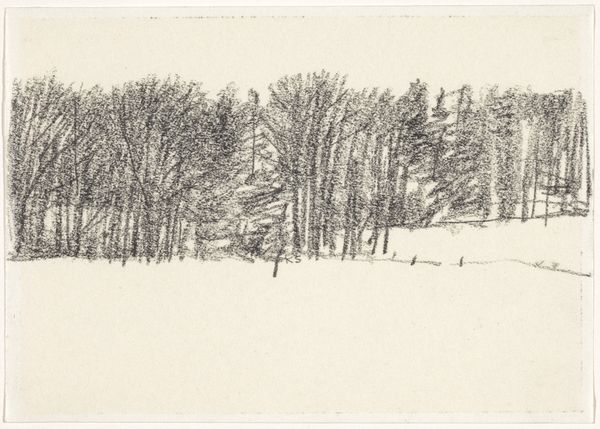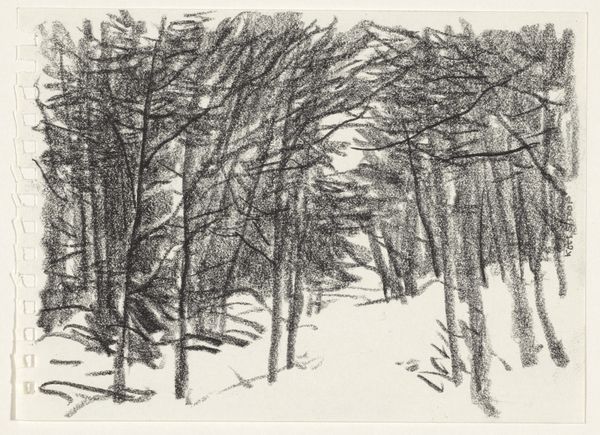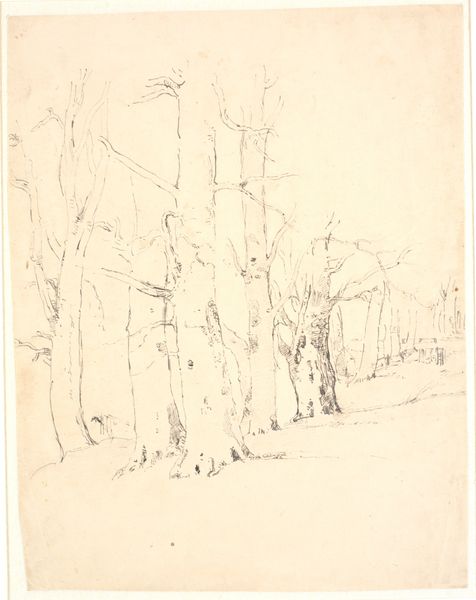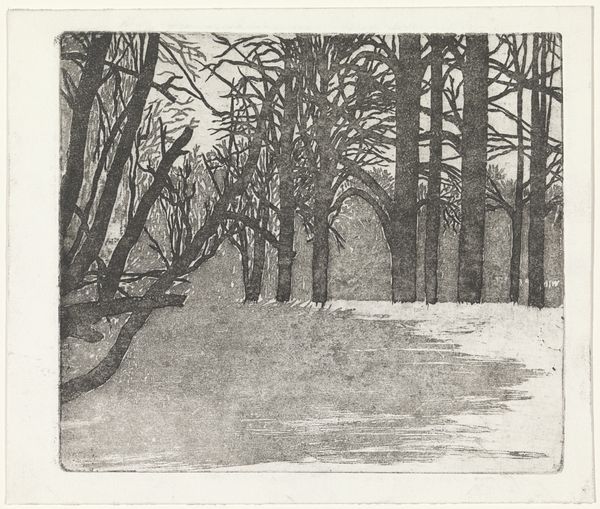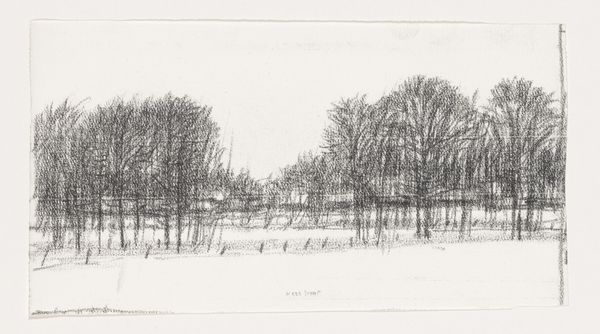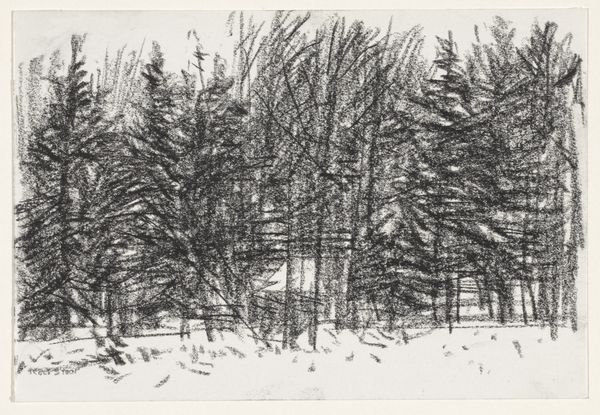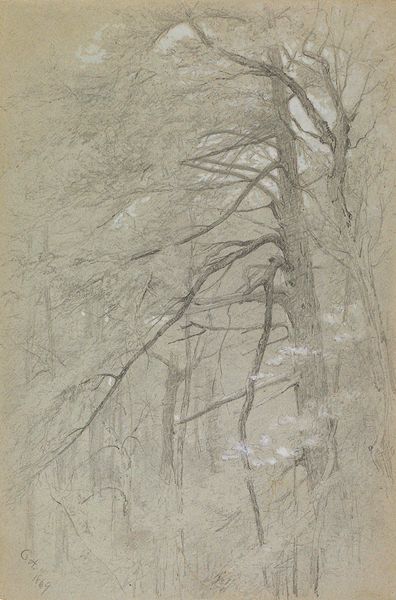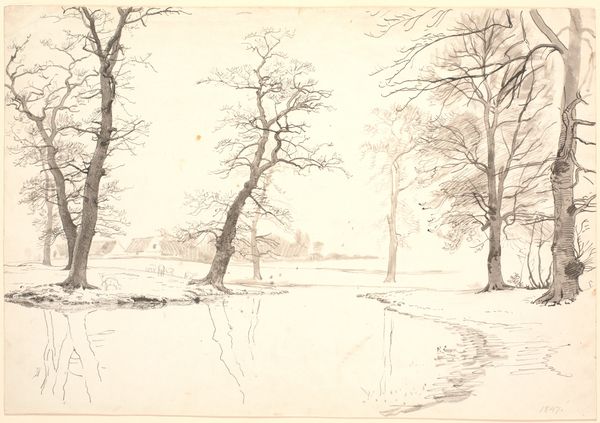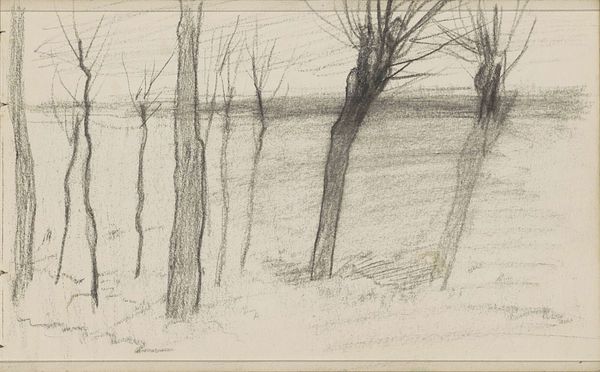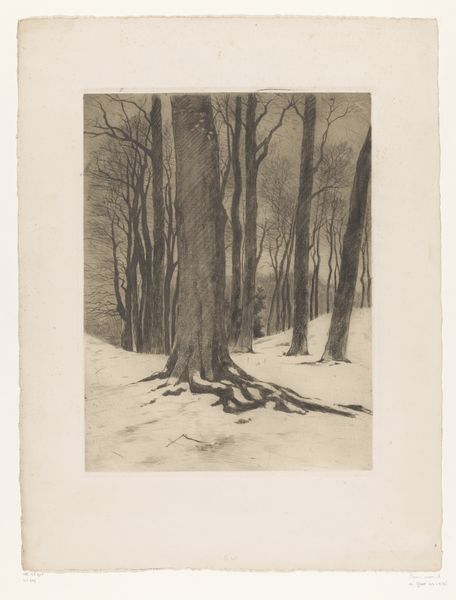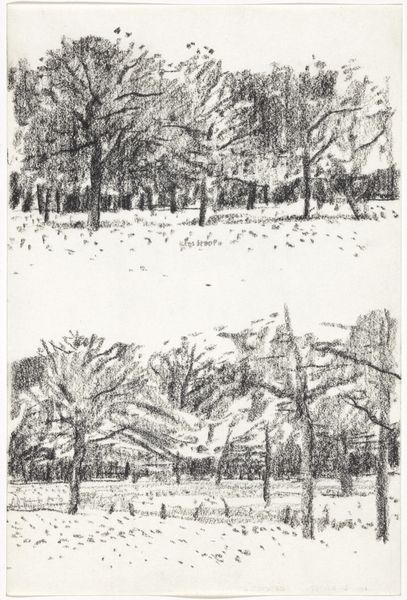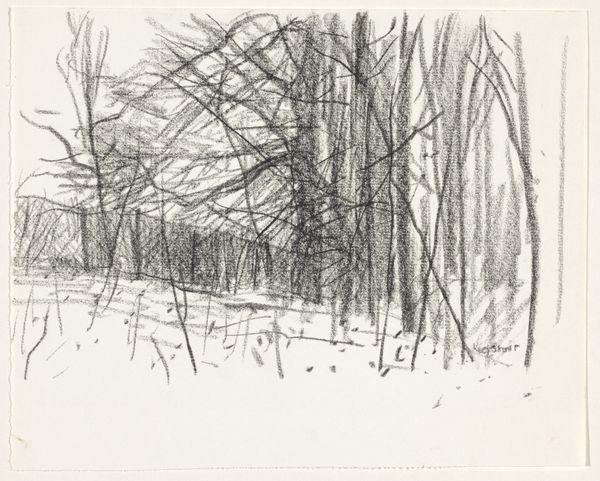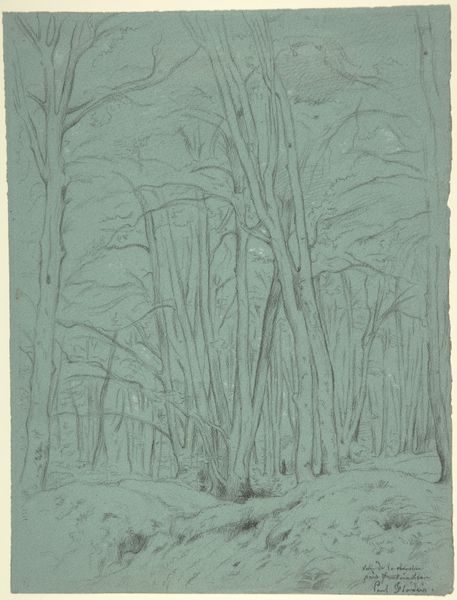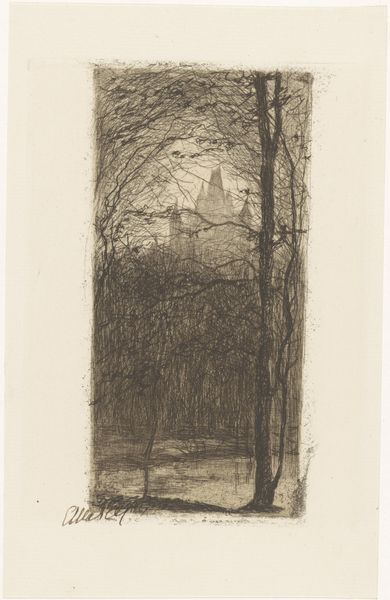
drawing, print, graphite
#
drawing
# print
#
landscape
#
symbolism
#
graphite
Copyright: Public Domain: Artvee
Editor: So, this is Léon Spilliaert's "De dreef," made sometime between 1917 and 1918. It's a graphite drawing, or maybe a print? Either way, it feels incredibly stark. Those towering trees and all that blank space… It's kind of unsettling. What do you see in this piece? Curator: Unsettling is a great word for it. I see a deliberate void, an almost painful absence contrasted by the imposing presence of the trees. Trees are potent symbols, aren't they? Think of the Tree of Life, the ancestral tree – representing connections to the past, growth, but also mortality. Editor: So, these stark, looming trees... they aren't just trees then? Curator: Not quite. Consider the historical context: World War I was raging as this was created. The graphic simplicity evokes a barrenness reflecting a ravaged world. Do you notice how the snow-covered ground almost consumes the forest floor? Editor: Yes, it's like everything is being swallowed up. Curator: Exactly! Snow, traditionally a symbol of purity, here feels oppressive, like a blanket smothering life. Spilliaert is creating a symbolic landscape that resonates with collective grief and uncertainty. How does the use of graphite enhance this feeling? Editor: It seems fitting, since graphite makes these thin, transient lines, like memories that could disappear any minute. Curator: Precisely! A visual metaphor for a fading world. It speaks to the fragility of existence and the enduring power of the natural world, even in devastation. Editor: I see what you mean. The emptiness now feels more like a presence, a heavy atmosphere charged with symbolism. Curator: Indeed, Spilliaert's deft use of symbolism and composition creates a lasting resonance, far beyond a simple depiction of nature. It’s been great to revisit it.
Comments
No comments
Be the first to comment and join the conversation on the ultimate creative platform.
